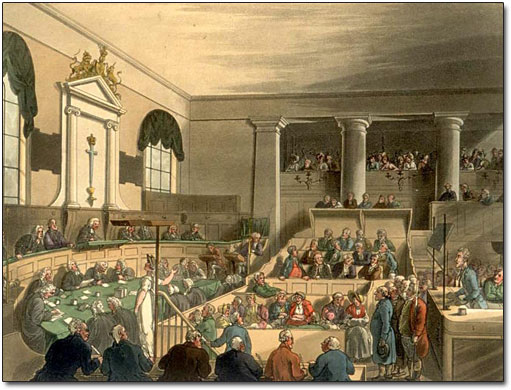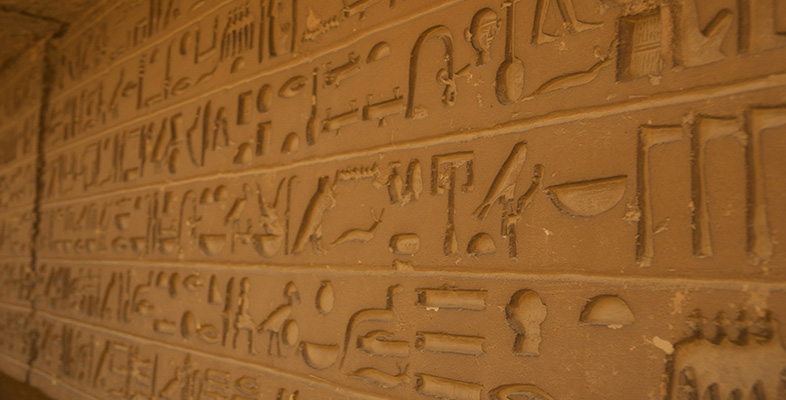2.2 Inquisitorial sources – glimpses on common practices?
Evidence of reading experiences can also be harvested from sets of inquisitorial sources in which ordinary people were compelled either directly or indirectly to reveal this information. Like the sources described above, these are most effectively used alongside other sources for the history of reading, especially as each carries its own methodological limits or particular bias. When you encounter these sources in UK RED, it is crucial that you consider the conditions in which the readers offered information about themselves.
Let’s consider a couple examples here. Sociological (or anthropological) studies form the first type of inquisitorial source. UK RED contains evidence of reading from several large bodies of work by social scientists in the nineteenth- and early-twentieth centuries. These men and women set out to observe life in Britain and, as part of this, to interview men, women and children about their daily habits. Henry Mayhew’s famous study of the working classes of London, London Labour and the London Poor, compiled during the 1840s and 1850s, reveals much about the struggles and pleasures of those who lived below the bread line. You can read a summary of some of his findings here [Tip: hold Ctrl and click a link to open it in a new tab. (Hide tip)] . Mayhew also completed a large volume on prison life which also included evidence of reading.
Activity 2
Let’s take a look at the various reading tastes that Mayhew’s interviews with the labouring poor uncovered. Go to the UK RED search page, and type ‘Mayhew’ into the keyword field for a basic search. I got 97 hits, which is quite a lot. What I’d like you to do is just casually scroll down the list of results. Are there any titles or authors that you recognise amongst these 97 records?
Comment
I saw quite a few texts for which the title could not actually be identified. This may have been because the questions asked encouraged answers that were too general, about reading tastes rather than specific works. Alternatively, this may be because some of the texts these readers spoke about were ephemeral and so very difficult to identify. However, I did notice that the Bible featured quite prominently amongst these hits, which suggests that it must have continued to loom large in the experience of the lower orders in the nineteenth century, despite some contrary evidence historians have presented of secularisation. I also picked out some very well known titles, including Bunyan’s Pilgrim’s Progress, Milton’s Paradise Lost, and Shakespeare’s works. At the same time, a good proportion of the titles seemed to be of the mass entertainment kind, sensational works such as Ainsworth’s Jack Sheppard. This brief survey suggests to me that it is very difficult to categorise the tastes of the poor in literature, that their tastes were very diverse. Moreover, the results show that nineteenth-century urban labourers had access to a wide variety of texts and titles.
Mayhew brought his own assumptions and prejudices to bear on his sociological surveys – he was not shy about commenting on some of the reading tastes of those he interviewed and observed and certainly thought there was room for improvement! However, less obvious but equally important are the preconceptions and assumptions that his interviewees brought to the event. Some historians have questioned the extent to which we can rely on many of the testimonies Mayhew published. Put simply, when interviewed by someone of a higher social position who not only intended to publish the story but also potentially had methods of relief to offer, did these poor men, women and children tell Mayhew the truth or tell him what they thought he wanted to hear? Or, at another level, how many of these interviewees attempted to put the story of their lives into a framework which Mayhew could understand and appreciate – not necessarily a truthful story, but nevertheless a sincere one?
Mayhew’s interviewees were asked directly about their reading. There are other sources in which ordinary men and women were asked very different and seemingly unrelated questions which lead them to expose some information about their reading habits or experiences. Criminal court records are one such source. Transcripts of trials, such as the Old Bailey Proceedings, but also newspaper summaries of courtroom evidence, abound with references to reading. Reading was often an activity that witnesses remembered doing on the day of the crime, or reading articles about the crime had led witnesses to the courtroom. A large number of these incidents have been entered into UK RED. You can find a substantial proportion of these by searching for ‘old bailey’ as keywords in the basic search. Let’s try that now.

Activity 3
Go to the UK RED search page and type ‘old bailey’ (without the quote marks) into the basic keyword search. How many hits did you get? When I tried, the database returned just over 200 results, which is a lot.
If you gently scroll down the list of results, you might notice that newspaper has a large presence in the type of text that these readers made reference to. Some reading historians have claimed that newspapers and other ephemeral texts were probably read more by people in, say, the 18th and 19th centuries, than books, but commented on less. Using a source like the Old Bailey which captures a very different kind of evidence might help to redress that balance.
We can use the entries collected from the Old Bailey Proceedings to try some valuable qualitative analysis of newspaper reading habits or practices in the 18th and early 19th centuries.
Select around five of these entries, randomly from the big list. If it makes it easier, you can mark five entries and export them into ‘my list’. Next, take a quick look at the details of each entry – clicking on each (or from the PDF generated in ‘my list’). Look at the evidence of reading they offer, and then at characteristics of that experience (noting, for example, the socio-economic group and occupation of the reader; the place where the reading occurred, and so on). From these five entries, can you detect any patterns about newspaper reading that this source might illuminate?
Comment
Here are the five samples I collected: entry one; entry two; entry three; entry four; and entry five (right-click on each link to open it in a new window or tab). What struck me first was the diversity of these entries, but then I noticed that they all seemed to belong to different categories of experience the telling about which had been directly encouraged by the circumstances of the courtroom and the likely questions asked of the witnesses. So in the first in my list, the Polish jeweller, Philip Farmer, heard another read the notice of the trial and that meant that Farmer then went to the court. Publican of the Two Brewers, William Spicer, featured in my second entry, remembered reading the newspaper as he recounted events leading up to the crime: the reading was incidental, and might have been part of his routine. The next two entries both catalogued the experiences of pawnbrokers, who had used the newspaper (in both cases the Daily Advertiser) to detect whether the items customers were pledging were actually stolen property. And finally, in my last, the accused claimed he found the forged bank notes in the street and went to the pub each day to see if the notes had been advertised as lost in the newspaper, presumably so that he could return them to his owner. I also noticed a pattern across these entries: that the newspaper featured prominently in public life – people went to the pub or the coffee house to read it, and some heard it being read aloud in a public venue.
The potential offered by court records is enormous. But our excitement about this potential should not prevent us from being critical about the evidence offered by this source. A large proportion of the evidence in UK RED taken from court records inevitably relates to the reading of crime news. For example, the entries we explored in some detail revealed that many of the witnesses were pawnbrokers, who seem to have read the newspaper to avoid accusations of being receivers of stolen goods. But when looking at this type of evidence, it is always useful to pose a counterfactual – what about those people who read the crime news and did not go to court, even though they had seen the stolen goods, witnessed the crime, or knew the accused? Could it be that those who did not go to court are of a greater number than those who did? Do court records reveal the ‘tip of the iceberg’, or do they point towards the reading habits of a small minority?
